Gray Zone editor's note: Between March 7th and 10th of 2019, Venezuela experienced the longest interruption of its electric system in the country's history. The government alleged that the blackout was the result of a sabotage directed against the central computer of the main hydroelectric power station at El Guri in Bolívar State.Threats of intervention and the failure of "Plan Guaidó"
If the electrical collapse was indeed the result of an outside attack, it represented the most severe escalation of hostilities since the beginning of the latest regime change campaign. The blackout significantly disrupted Venezuelan society and showed that the war against the country targeted everyone, regardless of their political affiliations.
What follows is a reconstruction of those moments of darkness, showing how the deluge of fake news and humanitarian propaganda, the interruption and recovery of the electrical services, the calls for violence and the organization of the people and their families transformed daily life into a struggle for peace and coexistence. As in the past, the Chavismo movement successfully resisted Washington's attempts to foment a civil war.
This analysis was originally published at the Venezuelan independent website Misión Verdad, and has been edited and adapted by The Grayzone
On January 23 of this year, the United States and its allies recognized Juan Guaidó as "President of the Bolivarian Republic of Venezuela", completely ignoring the Venezuelan Constitution and the more than 6 million Venezuelans who voted for Nicolas Maduro in the elections of May 20, 2018.
During the last two months, all mechanisms of economic suffocation against the country have been deployed. Everything from bank accounts to the assets of the Republic have been frozen by the U.S. government. Most glaring among these cases was the blockage of $1.2 billion in gold owned by Venezuela, located in the Bank of England, and the confiscation of CITGO, a subsidiary of PDVSA on US soil.
The amount of Venezuelan assets that the United States have seized is calculated at approximately $30 billion. Washington has used the excuse that it is merely "protecting those resources" to justify funneling them to the faux government of Guaidó.
Tactics of diplomatic and public relations harassment have also been escalated, with the intention of isolating the country internationally. But the plan has suffered multiple failures. The first occurred on February 23rd, the day when the "humanitarian aid" farce was used to generate an internal rupture in the Bolivarian National Armed Forces (FANB) and remove President Nicolás Maduro from power.
The hoopla of the 'Aid Venezuela' concert in Cúcuta, Colombia, and the supposed peaceful nature of the aid itself were exposed within a few hours as the violence on both international bridges and the failed attempt to ferry violent groups into Venezuela became impossible to ignore. When the opposition was exposed for burning trucks loaded with US aid, it suffered a powerful public relations blow.
Meanwhile, the country maintained a state of relative calm while the military remained cohesive and composed, degrading the regime change agenda. The coup was losing momentum by the day.
Bloomberg reported that, while in Colombia, Juan Guaidó planned a European tour, but US officials ordered him to return to Venezuela to "take advantage of the momentum" and, in the process, "to seek his imprisonment." In other words, the US was dangling Guaidó before the Venezuelan government, hoping to provoke them into arresting him and thereby generating the pretext for a military response. They knew that they were running against time and needed to stimulate military intervention.
Bloomberg also highlighted the declining importance of Guaidó in Venezuela and abroad. With Venezuelan institutions maintaining loyalty to Maduro, Guaidó's promises of the "end of the usurpation" became increasingly improbable.
Meanwhile, in the UN Security Council, Venezuela's diplomatic body pushed back in a meaningful way against the US agenda with the help of vetoes from the Russian and Chinese administrations against a US promoted draft resolution that aimed to further destabilize the country.
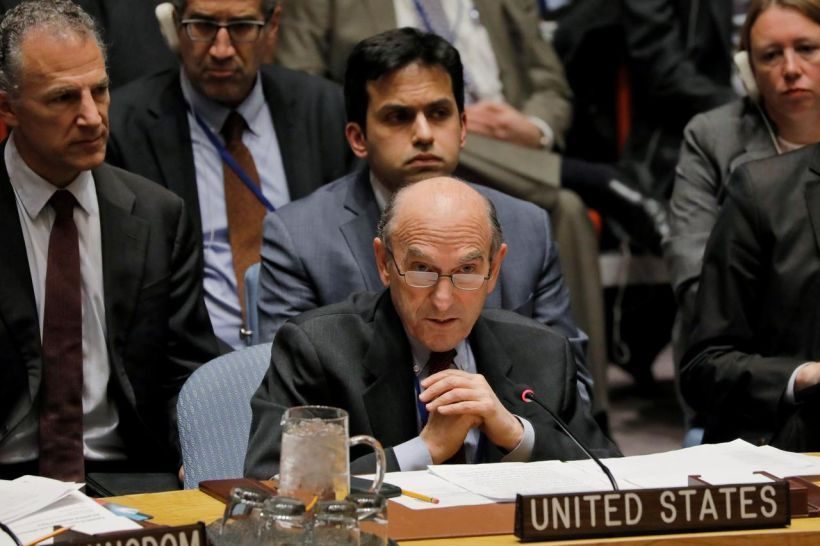
On March 7, as the pressure mounted on the US to deliver losses to a government it had clearly underestimated, the electrical grid went dark.
Just a week before the blackout, Secretary of State Mike Pompeo had warned that the US would "take action" against anyone who obstructed entry of the humanitarian aid. When the blackout hit, it became increasingly clear what Pompeo was referring to.
The attack on the electrical power grid and the case for sabotage
Around 5pm on Thursday, March 7, there was a plunge in the essential electricity supply systems in more than 80% of the national territory. The blackout was immediate and comprehensive.
Luis Motta Dominguez, the Minister of Electric Power, informed the government that the event was an act of sabotage to the main hydroelectric plant in the Guri Dam, Bolivar State, Venezuela. President Maduro, during his first appearance before the country, reported that the attack on the national electric system occurred in three stages.
The first stage, according to Dominguez, was the hacking of the main computer and control systems. These systems would have been electronically assaulted, "leaving all computer screens black," said the President. On Monday the 11th, Maduro also indicated that the attacks were made from Houston and Chicago, suggesting that the US government itself was responsible for the cyber attack.
The second stage, Dominguez said, consisted of the use of electromagnetic pulse devices. Highly sophisticated devices of electronic warfare were aimed at the transmission systems and the control platform, disabling them and inducing the system to overload and fail.
The third stage was a direct physical attack to the intermediate platforms of electric distribution. There were five attacks on four substations, with little time between each one them; they were carried out simultaneously to stabilize the general electricity supply.
In the midst of the attack, Forbes published a piece by artificial intelligence and Big Data specialist Kalev Leetaru. While seeming to downplay the possibility of electrical sabotage, Leetaru made a remarkable concession.
"In the case of Venezuela," he wrote, "the idea of a government like the United States remotely interfering with its power grid is actually quite realistic. Remote cyber operations rarely require a significant ground presence, making them the ideal deniable influence operation. Given the U.S. government's longstanding concern with Venezuela's government, it is likely that the U.S. already maintains a deep presence within the country's national infrastructure grid, making it relatively straightforward to interfere with grid operations."
Leetaru added that, "The idea of a foreign state manipulating the electricity grid to force a transitional government, is very real." He added that these methods of attacks "are increasingly being discussed in national (US) security communities as legitimate and legal tactics to undermine a foreign state."
The striking comments from a widely-recognized tech expert reinforced the Venezuelan government's assessment of the situation.
Though it did not mention Venezuela, a recent analysis by the World Economic Forum warned that "hackers are causing blackouts" in countries across the world, and demanded new policies to build up "cyber resilience."
On March 26, less than three weeks after the blackout in Venezuela, the White House quietly issued an executive order warning that "an electromagnetic pulse (EMP) has the potential to disrupt, degrade, and damage technology and critical infrastructure systems." The order stated that EMPs could "affect large geographic areas, disrupting elements critical to the Nation's security and economic prosperity, and could adversely affect global commerce and stability."
The curiously timed assessment suggested that the US had no shortage of familiarity with the potential havoc that could be wreaked with EMPs.
Comment: Indeed, US 'think-tanks' have been warning of such for at least a decade, on the basis that 'Iran' and 'North Korea' are building such capability, thereby justifying the development of US capability.
As The Grayzone previously reported, Otpor - the US-funded soft power NGO that trained Guaido and other Voluntad Popular activists - composed a regime change strategy blueprint in 2010 that explicitly urged Venezuela's opposition to exploit massive electricity blackouts.
Authored by Otpor co-founder Srdja Popovic, the memo described the potential collapse of the country's electrical sector as "a watershed event" that "would likely have the impact of galvanizing public unrest in a way that no opposition group could ever hope to generate."
Prophecies of doom from Washington's coup masters
Just hours before the collapse of the Venezuelan electric system, the American lawmaker at the forefront of the campaign of destabilization issued a doomsday prophesy for the country.
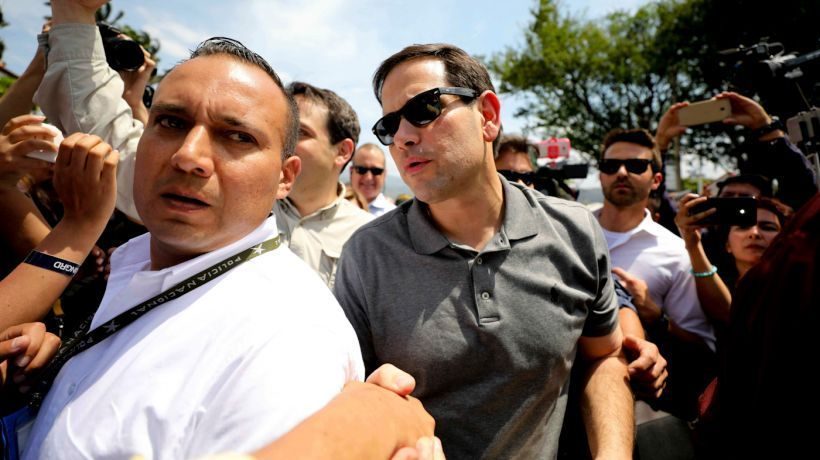
Even before Minister of Communication Jorge Rodríguez was able to inform the media about the scope of the attack on the electric system, Rubio declared through his Twitter account that "backup generators have failed," barely concealing his excitement.
On Friday 8th and Saturday 9th, the senator blamed the Maduro government for a "lack of diligence."
At the same time, Guaidó took to Twitter to declare that "the light would return to Venezuela when the "usurpation is terminated," suggesting that the blackouts would only end once Maduro was out of power.
Rubio proceeded to publicize fake news about alleged newborn casualties at the University Hospital of Maracaibo, Zulia, and other hospitals of the national public health system. At the same time, several NGOs, such as Codevida, blasted out announcements of unconfirmed events regarding deaths, chaos and loss of public order in the national territory, creating a disproportionate and distorted perception of the events in order to market the theme of a supposed humanitarian crisis.
NGOs such as Codevida and others echoed Rubio's false claim that 80 neonatal deaths had occurred, along with more than 200 deaths. This figure was denied by the president of the Medical Association of Zulia, Dianela Parra.
Meanwhile, Pompeo announced through social media platforms that Venezuela was, "without medicine, without food, now without electricity and soon, without Maduro."
The statement sounded less like a prediction than a strategic blueprint for regime change. His comments were echoed by Elliot Abrams, who proclaimed in a radio interview that "pressure will increase, US pressure and internal pressure also. Especially this week, when there's no light!"
Meanwhile, John Bolton urged the Venezuelan military to accept the amnesty offer put forward by Guaidó. It was just the latest attempt to promote rifts in the army's officer corps and promote rebellion in the army, which was working to protect the national electric system from further damage.
Western media exploited the situation to amplify the narrative of a humanitarian crisis and portray a nation submerged in chaos. New York Times correspondent Anatoly Kurmanaev claimed hyperbolically that Venezuela had descended into the "law of the jungle," and predicted a post-apocalyptic "Mad Max" scenario just over the horizon. In this way, the international press reinforced the messaging of the Trump administration.
Comment: And thus, on this issue anyway, Trump became Full Bore Globalist.
Life during the blackout
The blackout coincided with the end of workday for the majority of the population. Traffic was interrupted by the non-operational lights. In cities with underground public transportation, such as Caracas, Los Teques, Valencia and Maracaibo, overground traffic was overloaded with the population that could not use the tunnels. Similarly, the collapse of the rail system that connected Valles del Tuy with Caracas made the transportation situation even more difficult.

For many people, the first night consisted of staying home and waiting for news. Friday the 8th brought official confirmation that the blackout had done deep damage across the country. School and work activities were suspended, but news of a gradual and progressive recovery of the electric service soon arrived, starting with the eastern states of the country, communicated through official and extra-official means.
Still for many, there was a second night with absolutely no power.
On Saturday morning, after a significant recovery of the service, another widespread blackout hit the country. On top of the lack of electricity, there was the challenge to get basic goods like gasoline, food and drinking water.
Getting gasoline was possible only if a station had its own generator. The banking system did not work or was working intermittently, affecting all commercial activities. In Caracas, businesses lacked staff and last but not least, the supply of potable water to most areas of the country was limited because its pumping system relied on electricity. Only those communities with water supply sources at above ground level could access the service.
Instead of assuming a collaborative attitude and support to the community to overcome the crisis, the Venezuelan opposition led by Guaidó attempted to magnify the anxiety and anguish by attempting to ignite chaos in the streets and encouraging violent looting.
The cyber attack against Corpoelec's computerized system at the Guri hydroelectric plant, and against the main operational 'brain' in Caracas, was followed by attacks explained by President Maduro as electromagnetic operations and, simultaneously, a sabotage to other infrastructure which halted and reversed the recovery process, with the apparent intention to make a total collapse irreversible.
President Nicolás Maduro placed special emphasis on one of the sabotages of this operation: the explosion of the electrical substations in Baruta and El Hatillo, which caused fires in the early hours of Monday morning. Much of Caracas suffered a power outage again.
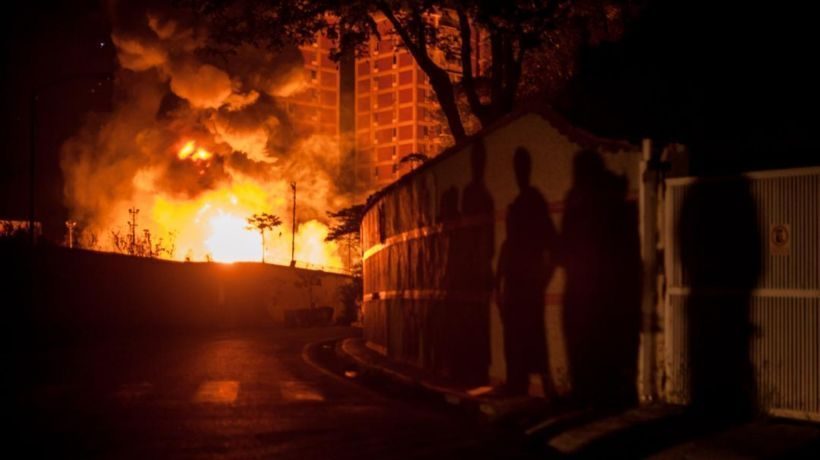
It's important to note that Venezuela has a mixed energy generation system. First, there is the hydroelectric power plant at Guri that supplies the majority of the country, and then there is a thermoelectric power plant at Tacoa. The capital, with the largest concentration of the population, feeds from both sources. Rodriguez explained that if the blackout happened under normal circumstances, "Greater Caracas could have easily been supplied on the Tacoa system."
Other explosions of transformers were reported in the interior of the country, affecting mainly the western region. In Zulia, the explosion was reported on Tuesday 12th in the afternoon, in the Las Cabillas sector of the Cabimas municipality. This state has also suffered from violent and irregular actions that have affected several businesses. Also in the Larense municipality of Cabudare, the explosion of another substation occurred on Monday 11th, causing greater delays in the restitution of energy in the area.
The harsh consequences of the blackout and Guaidó's destabilization plan
The blackouts caused serious discomfort and inconvenience for most Venezuelans. But they also prompted a striking show of resilience, as citizens came together to defy the attempts to destabilize their society.
National media outlets like El Universal and El Correo del Orinoco reported through their social media platforms that the traffic system of Caracas had collapsed due mainly to the interruption of electric power during peak hours. The operations of the Caracas Metro were stopped and the population had to travel by foot or by other means in order to get home on March 7.
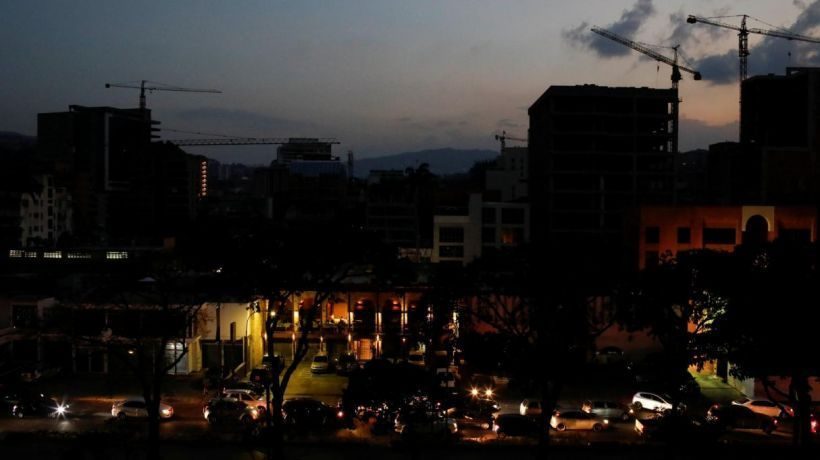
Sales and perishable goods such as meats and vegetables were also affected. The National Federation of Cattle Management reported a 2 million kg of beef loss during the blackout in slaughterhouses across the nation. In the majority of households, families chose to consume these foods as soon as possible.
In cities with high temperatures, such as Maracaibo, where the use of air conditioners is common, the discomfort was even greater. The water service was affected in cities and towns that depend on hydraulic pumps for their supply.
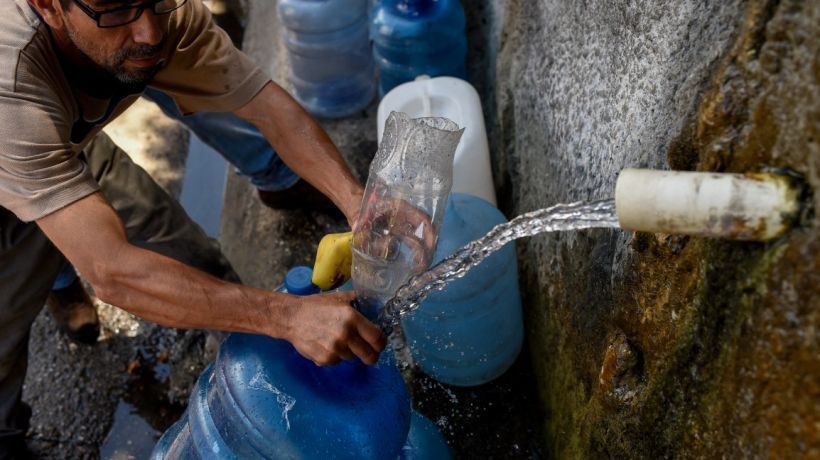
In many cities, the interruption of open radio and television signals was reported. Many stations don't have power plants and those that did survived thanks to backup generators. This meant that besides the electrical blackout, there was also an information blackout, given that many of the few private broadcasters still on air were simply playing music, violating their obligation to keep the population informed about the events under development.
The interference in communication systems and the radio-electric spectrum was the perfect recipe for a toxic broth of misinformation, especially in the Andean region, allowing fake news to overwhelm the reality of the situation.
All these components - rumors, false information, distortions and half truths - pushed a noticeable percentage of the population into a frenzied and anxious state of mind.
In the State of Zulia, violent groups looted deposits belonging to Empresas Polar: beer, soft drinks and other beverages. Guaidó justified the looting on the grounds that it was motivated by hunger.
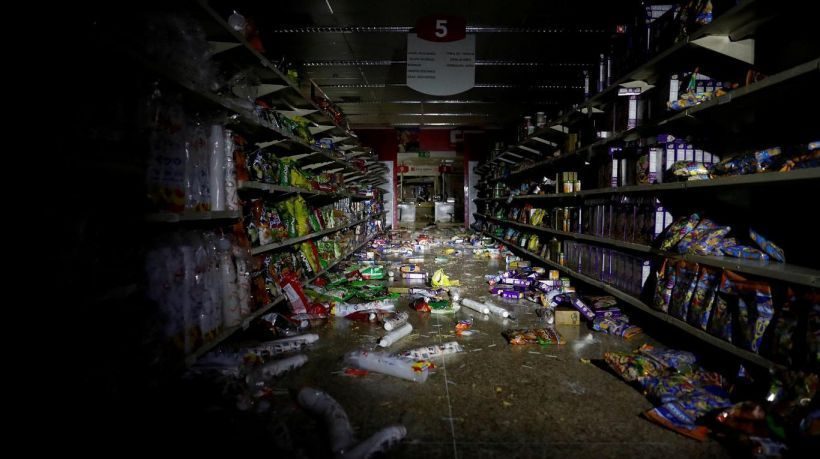
In some cities, barricades and road closures appeared as an immediate response to Guaidó's calls for violence. Other known figures from the Venezuelan political opposition tried to provoke reactions among the population and called for their followers to spread the chaos nationwide. But most rejected the appeals for chaos, ensuring that any eruptions of violence that did occur were isolated and insignificant. The ultimate effect of the blackout was to keep most people in their homes.
By Sunday the 10th, the government announced the partial restoration of electricity in several cities throughout the country. This helped restore calm while testifying to the resilience of a population that was able to manage the dire situation with support from their families and through communal solidarity.
Information began circulating on cellular platforms and TV networks about the recovery of the electrical system as well as news of nationwide social stability and the noticeable absence of violent elements seeking destabilization.
By Monday, Maduro had informed the nation about the army's actions during the contingency plan, the deployment of its security mechanisms, and declared victory over the electric sabotage. The president instructed the military corps to supply fuel to all health center plants in areas that were still affected and emphasized the return of communication platforms and other services dependent on the electrical system.
From that point, Maduro made it clear that it was the Bolivarian Government and not any other political element that would use strategic management to assume the task of normalizing daily activities. The announcement was a substantial setback to the destabilization plans. The ultimate goals of Washington - social fragmentation and chaos - remained unmet thanks to the rapid government and society-wide response.
By Tuesday, the electrical system appeared to be returning to normal and was overcoming its vulnerabilities. The reinstallation and start-up of the electric distribution was similar to the recovery of the main PDVSA system in 2003 during the oil industry sabotage enacted by the opposition, but this time, with a greater sense of commitment and a greater level of clarity about the severity of the scenario.
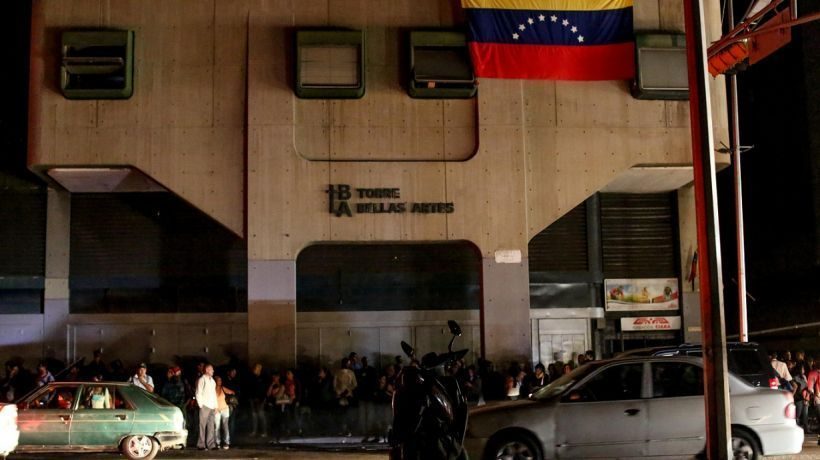
Solidarity and communal strength: the people pool together
The magnitude of the electric attack would have resulted in a total collapse of Venezuela and its society, realizing the "failed state" label that Washington evokes constantly to justify direct military aggression.
But throughout Venezuela, the population rejected impulses to surrender to anguish, relying on family and community structures to address their needs. Resistance and community are constant themes in the culture of Chavismo, however, it is notable that despite calls to turn to violent protest, most opposition supporters stayed home - a tactical rejection of Guaidó's divisive appeals.
In the barrios and countryside across the country, firewood was used to cook food, while neighbors scouted nearby areas for drinking water. Using cars only to make emergency trips and charge cellphones, communities were able to stay in touch and keep their members informed about the progress with respect to the restoration of the power supply.
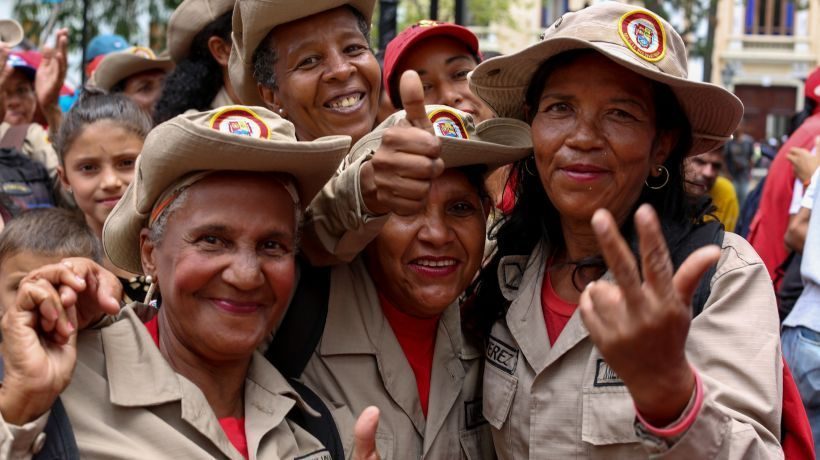
The CLAP program has complete records of the populations they support. It has served as a support network with a comprehensive map of the strongest and weakest areas, allowing each community to act according to its needs. Thanks to CLAP, government was able to maximize its effectiveness during the blackout by targeting the communities with the greatest needs.
Other organized groups accompanied the state with the smaller tasks to support the most vulnerable. One example took place at the JM de los Ríos Hospital, where, in addition to guaranteeing medical attention to the hospitalized children, they were visited by artists who provided hours of healthy entertainment in the midst of the uncertainty and helping stave off fear.
The civic-military union that forms the linchpin of the Bolivarian Revolution was also at the heart of the counterattack. Minister of Defense Vladimir Padrino López highlighted the deployment of different elements of the Bolivarian National Armed Force to restore basic services and protect the Venezuelan population.
Instead of intimidating citizens accustomed to being locked in their homes lit with televisions and computers, the blackout served as an opportunity to improvise community activities, exchange ideas to protect food, and share information about medical care locations, commercial options and functional pharmacies.
Each community's story of persisting through the blackout paints a broader portrait of a society that has been shaped by the culture of Chavismo, where popular participation is seen as the most precious feature of the Venezuelan identity.
It was this feature of Venezuelan society that enabled it to effectively resist the most prolonged and massive attack on its infrastructure since the dawn of the Bolivarian Revolution. And it contrasted sharply with the negative solutions spun out of the "entrepreneurship" sector, which chose to privatize services during such a critical time, exploiting citizens in need by selling ice, water, candles and electricity supply in foreign currency.
Assessing the damage, charting a path back to normalcy
72 hours after the attack, the city of Caracas had recovered energy in most of its neighborhoods. In the the following hours, the eastern, central and southern states also recovered their power. The Western region had delays, extending the power stabilization up to 24 hours more in Táchira, Mérida, Trujillo, Zulia and Lara.
Five days after the continuous attacks to multiple substations and the parallel sabotage to the Guri dam, preventing the stabilization of the National Electric System, the entire country had managed to return to normal.
Through social media, the opposition attempted to deceive outsiders with images purporting to show desperate Venezuelans collecting water from the Guaire River, which is filled with sewage. Western outlets like Reuters, which serve as faithful stenographers of the opposition's narrative, fell for the lie. However, a report made by a Catia TV team debunked the bogus claims. In fact, those people were drinking from a natural well.
What's more, cistern trucks were set up to transport water to communities in need, a mechanism made possible by communal councils. Others supplied their homes by using buckets and wheelbarrows.
Although the exhaustion of those days was felt across the country, the government's array of social programs were resumed as soon as the communications were fully operational. The food assistance policy of the CLAPs was reinforced by orders of Maduro, softening the blow for those whose food spoiled during the blackout.
The official balance on Wednesday presented by Minister Jorge Rodríguez was favorable, despite the fact that the cyberattack to the nation's power grid caused losses of $877 million to the Venezuelan nation.
The country's business class, meanwhile, made a stunning admission: the 'regime change' plan they supported had caused them massive losses. For instance, the National Federation of Cattle Ranchers of Venezuela (Fedenaga) stated $1.4 million were lost in the course of the coup and subsequent blackout.
One million kilograms of cheese and 900,000 kilograms of meat decomposed due to a lack of refrigeration. Another 6 million liters of milk were damaged while waiting for the electric power restitution.
The firm Ecoanalítica put the losses for the country at $875 million - approximately $100 million of damage per day - which reduced gross domestic product by 1%.
Commercial establishments were also the target of vandalism, especially in the state of Zulia and, to a lesser degree, in Lara, Monagas, Miranda and Barinas. While the political opposition's agenda was to whitewash these criminal acts, parading them internationally as consequences of the social crisis triggered by the blackout, they omitted the role that the national security forces played in protecting businesses.
Long hours of intensive effort from the majority of the Venezuelan population alongside the government ensured an effective response. One week after the attack, public and private labor, trade, production and industrial activities were resumed.
But just as life appeared to be returning to normal, the country was plunged into darkness again on March 29. From Washington, coup czar Elliot Abrams confidently stated, "The likelihood is the blackouts will continue."
About the author
Mision Verdad is an independent Venezuelan website delivering news and analysis
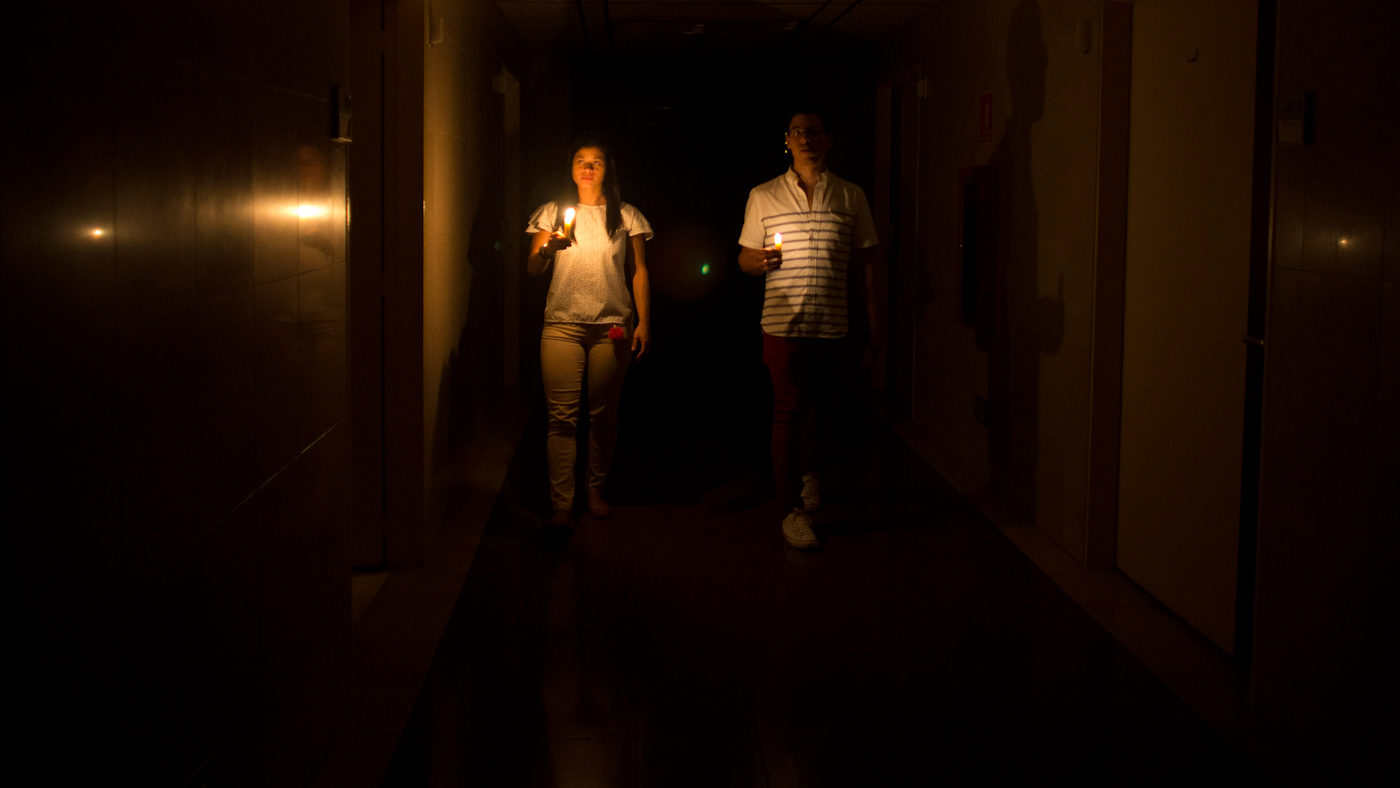

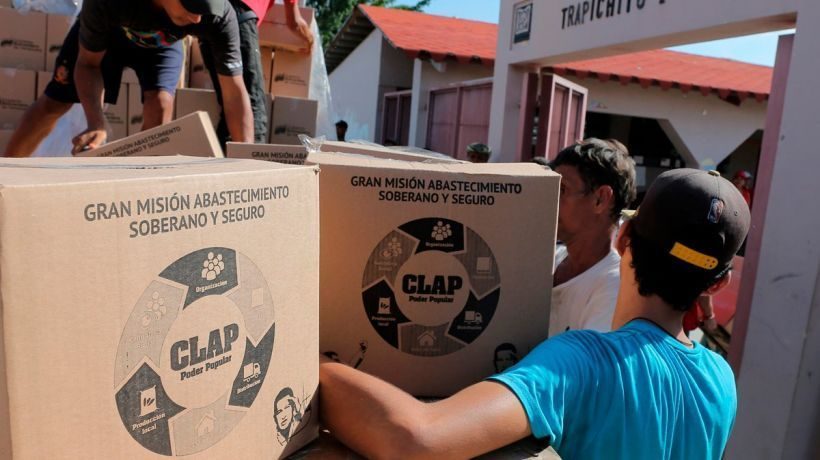
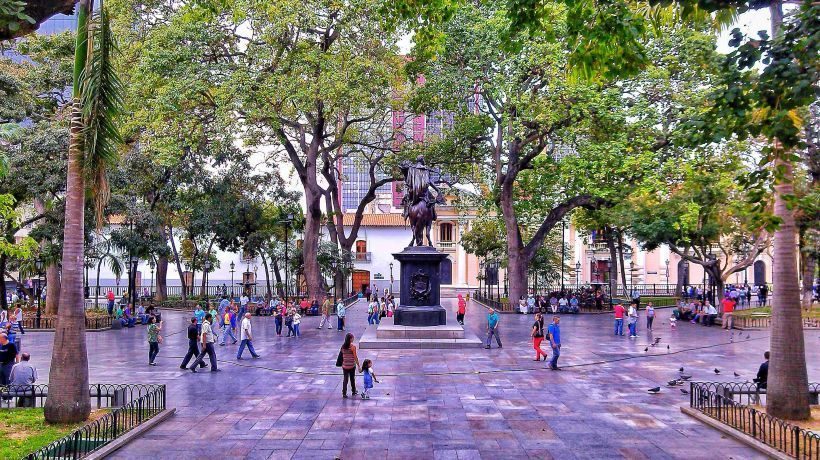
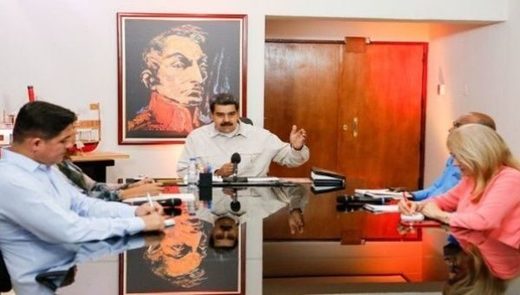



Instead of intimidating citizens accustomed to being locked in their homes lit with televisions and computers, the blackout served as an opportunity to improvise community activities, exchange ideas to protect food, and share information about medical care locations, commercial options and functional pharmacies.
The blackouts caused serious discomfort and inconvenience for most Venezuelans. But they also prompted a striking show of resilience, as citizens came together to defy the attempts to destabilize their society.
Pause for thought:
The US had planned on a lightning coup through a combination of massive external pressure and internal destabilization. But they failed to dislodge Maduro, and were unable to trigger the fragmentation of Venezuelan society that would have justified intervention.
Now this strikes, me we are seeing something "new" here the use of cyber warfare, using technology, to bring about political and social change in a country,
To essentially use the internet to disable all forms of communication, the banking system, the energy sector, transport and despite these obstacles Venezuela was able to survive, thanks from a "little" help form it's friends maybe.
But it brings to my mind, the broader question, who will be the next on the kill switch.